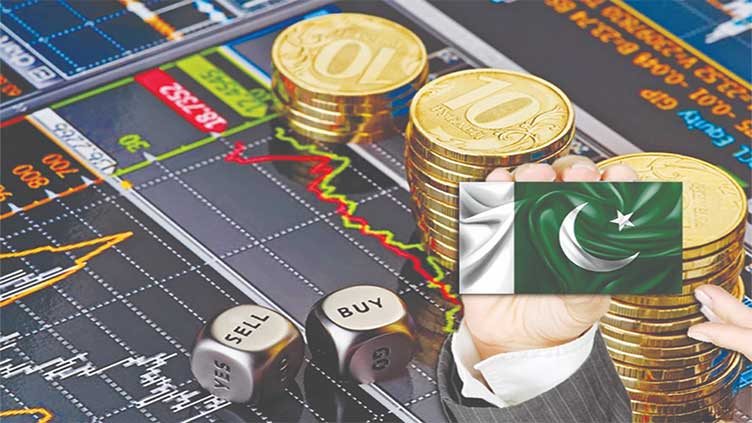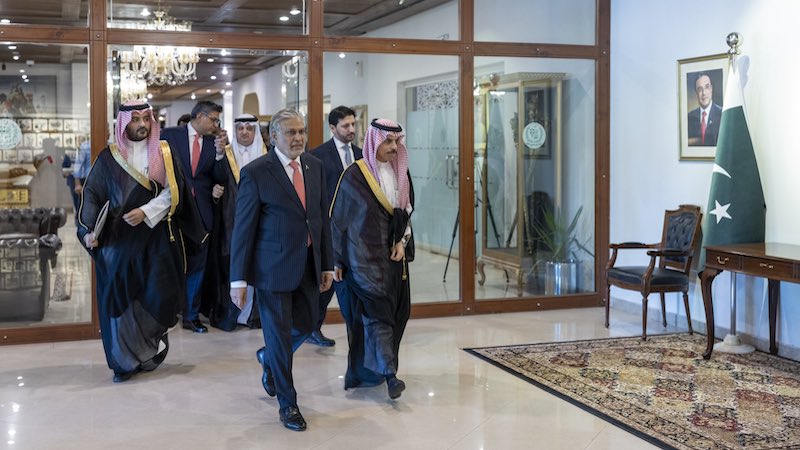







As of December 30, 2024, Pakistan's fiscal system is under significant strain, with the country borrowing $2.667 billion in the first five months of FY 2024-25, a decrease from $4.285 billion in the same period of the previous fiscal year. The total borrowing, including inflows from the International Monetary Fund (IMF), has reached $3.697 billion, yet no funds have been received from Saudi Arabia or the UAE as of November 2024 [465ff221].
Federal Minister for Finance and Revenue Muhammad Aurangzeb previously expressed optimism that Pakistan's economy could reach $3 trillion by 2047, emphasizing the need for a Charter of Economy and a Charter of Environment to guide this ambitious goal. The government has set an ambitious revenue target of Rs 12.97 trillion for FY 2024-25 but has faced challenges, with the Federal Board of Revenue (FBR) collecting only Rs 4.295 trillion, falling short of the Rs 4.639 trillion target [5806ee75].
The ongoing discussions with the IMF regarding a $7 billion bailout approved in September have highlighted the precarious financial landscape. The IMF mission chief Nathan Porter has engaged with Pakistani officials to assess the fiscal situation, which includes a revenue shortfall of nearly 190 billion rupees (approximately $685 million) for the fiscal year [755a9b8a].
Despite the government's efforts to stabilize the economy, the introduction of the Tax Laws (Amendment) Bill 2024 on December 18 has faced opposition due to concerns over potential constitutional violations. Additionally, there are growing concerns regarding the inefficiency of the Pakistan Revenue Automation Limited (PRAL), which has been criticized for its role in revenue collection [465ff221].
Pakistan's financial needs for the fiscal year 2023-2024 are estimated at around $25 billion. The government aims to re-profile $12 billion in bilateral debt, with significant amounts owed to the UAE, China, and Saudi Arabia. The IMF's recent Country Report No. 2024/310 emphasizes the importance of macroeconomic stability and sustainable growth, urging reforms in revenue collection and the implementation of a National Fiscal Pact to reorganize federal-provincial fiscal relations [dcf6e45f].
In terms of foreign direct investment (FDI), Pakistan has seen an increase to $1.9 billion in 2023-2024, up from $1.6 billion the previous year. However, recent reports indicate a decline in FDI inflows from Saudi Arabia, which dropped 8% quarter-on-quarter to 18 billion riyals ($4.8 billion) in Q3 2024, contributing to a total of $14.5 billion for the first nine months of the year, below the target of $29 billion [4a6a3217]. Both Saudi Arabia and the UAE have shown interest in investing in sectors such as agriculture and mining, although previous efforts to secure investments have faced challenges [dcf6e45f].
Aurangzeb acknowledged setbacks in the privatization of Pakistan International Airlines (PIA) but praised the fiscal efforts of provincial governments like Sindh and Khyber Pakhtunkhwa. The cabinet has also approved the National Fiscal Pact without changes to the National Finance Commission framework, indicating a commitment to fiscal reforms [5806ee75].
Pakistan is pursuing ambitious proposals to boost its GDP by $100 billion by 2035, focusing on sectors such as agriculture, tourism, and labor export. The agriculture sector is projected to evolve into a $30 billion industry, while promoting Gandhara-based Buddhist tourism could attract significant global interest [68ca452d].
The IMF report stresses the importance of effective liquidity management and cash balance optimization, alongside investment in human capital and social support programs. It also calls for a tight monetary policy to manage inflation and highlights the need for legal reforms to ensure financial stability [8ab008ca].
Pakistan's per capita income has recently risen to $1680 in FY 2024, reflecting some positive economic activity. The ICT sector has shown promising growth, with exports reaching $2.283 billion during FY 2024, indicating a strong potential for digital economy expansion. The government is focusing on enhancing the IT sector with significant budget allocations and initiatives aimed at digital transformation, which aligns with the broader economic goals outlined in Vision 2035 [7d611e80].
The economic outlook for Saudi Arabia also presents challenges, as it posted its first current account deficit since 2021 in Q3 2024, with a fiscal shortfall expected at 2.8% of GDP for the year. Crown Prince Mohammed Bin Salman aims to quadruple FDI to $100 billion by 2030, but recent declines in investment inflows could hinder these ambitions [4a6a3217].